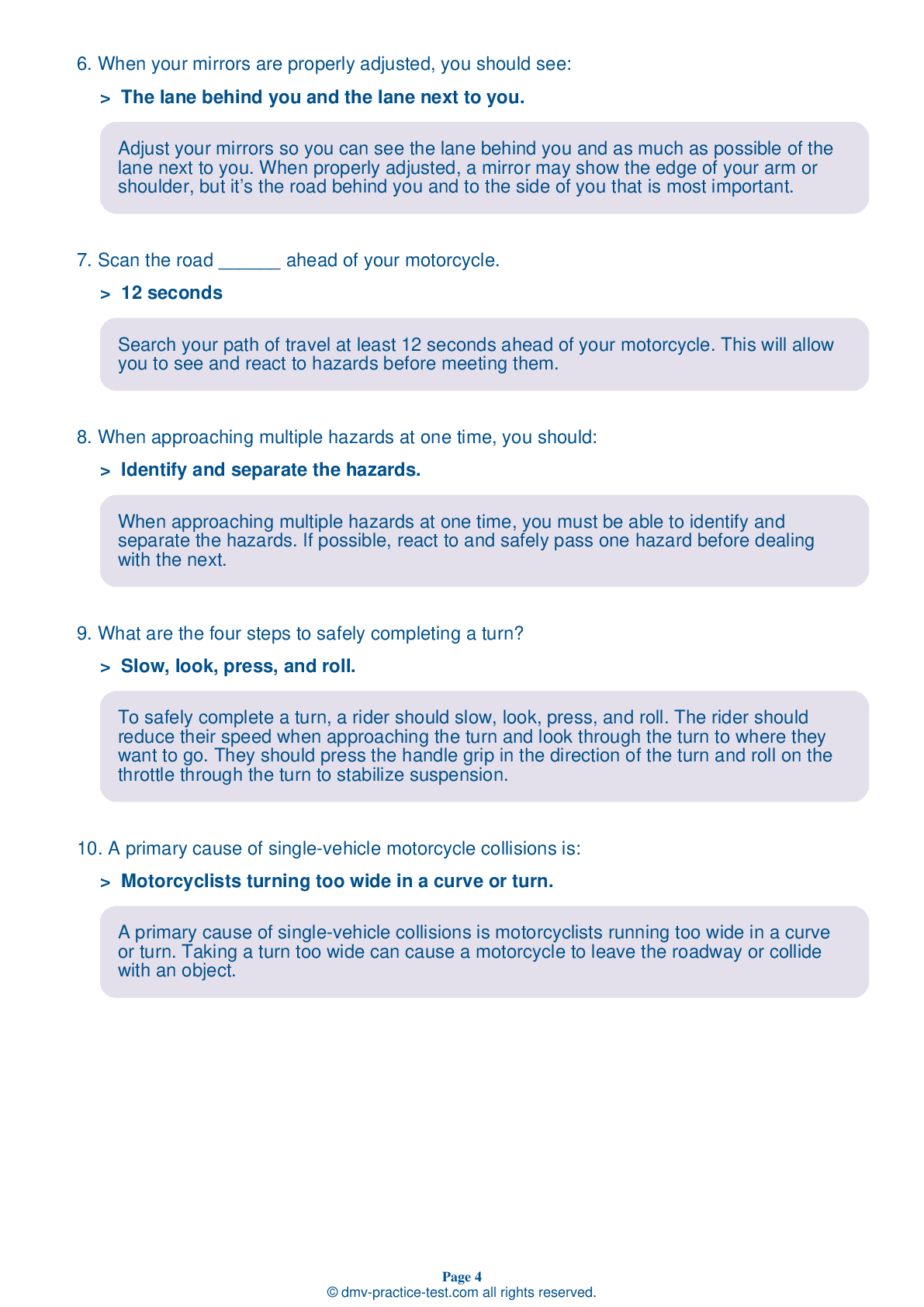Motorcycle Test | License MD 2025 | FREE Online Practice! #7 Page 3 of 4
Take this FREE motorcycle test (license in MD 2025) to check your knowledge of the road rules. To improve your results, download a motorcycle handbook online, study theory, and practice for free on our website. Still worried about how to get a motorcycle license in Maryland in 2025? Check our website for more sample tests, train as much as possible, and boost your grades!
13 . When parking on the roadside, you should:
When parked on the roadside, a motorcycle should be parked at an angle of about 45 degrees with the rear tire touching the curb.
14 . A motorcycle passenger should:
Motorcycle passengers should wear the same protective gear that is recommended to operators. Without crowding the operator, a passenger should sit as far forward as they can and hold firmly onto the operator's waist, hips, or belt. They may choose to hold onto the bike’s passenger handholds, if available.
15 . When the road is slippery, maintain a following distance of at least:
An expanded cushion of space is needed if your motorcycle will take longer than normal to stop. If the pavement is slippery, if you cannot see through the vehicle ahead of you, or if traffic is heavy and another driver may try to squeeze in front of you, open up to a minimum three-second following distance.
16 . How does the stopping distance for motorcycles compare to the stopping distance for cars?
Under normal conditions, the stopping distances for motorcycles is nearly the same as it is for cars. However, slippery pavement makes quick stops especially difficult for motorcycle operators.
17 . A child passenger:
A child passenger on a motorcycle should always ride immediately behind the operator. A child sitting in front may be unable to balance properly and could interfere with the operator's use of the controls.
18 . When riding in a group, inexperienced riders should position themselves:
Inexperienced riders should ride just behind the leader. This ensures that they won't have to chase after the group, and it allows more experienced riders to keep an eye on them from behind.
See the exact questions that will be on the 2025 Maryland DMV exam.
99.2% of people who use the cheat sheet pass the FIRST TIME
Jeneen was tired of paying $5/gallon. She got herself a scooter that required the motorcycle license. She studyed the motorcycle test cheat sheet and passed her test the next day!
Christopher tells us how he knew nothing prior to obtaining the motorcycle study guide, and he only got one question wrong because he clicked on the wrong answer by mistake.



